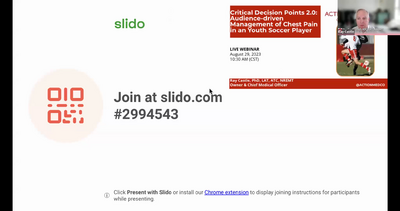AI Chat Bot
CRITICAL DECISION POINTS 2.0: Audience-Driven Management of Chest Pain in a Youth Soccer Player › Learning Material
Presentation (Video)
Updated Jan 22, 2024
SPECIAL NOTE:
This course was originally listed on the presentation as "BOC 1.25 Category A CEUs". The presentation content was longer and therefore now available as 1.50 Category A CEUs.
Copyright © 2025 Action Medicine Consultants, LLC
___MESSAGE___
___MESSAGE___

